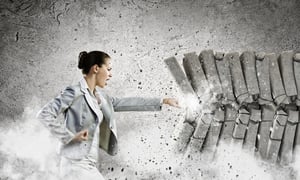 Lean organizations target 8 types of waste in an effort to create the perfect flow of value to the customer. Ideally, no resources are used unnecessarily and every task contributes something for which customers are willing to pay. Of course, achieving this is much more challenging than just saying it.
Lean organizations target 8 types of waste in an effort to create the perfect flow of value to the customer. Ideally, no resources are used unnecessarily and every task contributes something for which customers are willing to pay. Of course, achieving this is much more challenging than just saying it.
That’s why a set of Lean tools and techniques have been developed to aid Leaders who embark on this journey. We’d argue that software designed to support this type of improvement is crucial to success.
The 8 Wastes of Lean
Lean practices have identified 8 specific types of waste. This is very helpful because some of them are less obvious and might not jump to mind when you start to think about waste reduction. They include:
Listen to this Post or Subscribe to the Podcast:
Transport: Although some movement of product, raw materials and work in progress is necessary, each time something moves an opportunity for damage, delay or loss is introduced. Transport also represents an expense that may or may not ultimately contribute to customer value.
Inventory: Materials or finished goods that are not immediately needed tie up capital and take up space unnecessarily. That is one reason that just-in-time production is so popular, but the waste of inventory does not only occur in manufacturing. Excess inventory might be medical equipment, textbooks, lumber, or even office supplies.
Movement: The waste of movement is much like the waste of transport, but it refers to people and equipment, rather than product or materials. It is frequently the result of poorly planned or organized workspaces, but can also take the form of unnecessary business travel.
Waiting: The waste of waiting happens when one function is unable to process work because it is waiting for input from upstream. Again, waiting is not a problem unique to manufacturing. It happens in medical offices, software companies, construction, and almost every other type of business.
Overproduction: Overproduction is relatively self-explanatory. It happens when more product is produced than needed. It is doubly problematic because not only are the effort and resources that went into producing the product wasted, but it also contributes to the waste of inventory.
Over-processing: Over-processing is about adding complexity to products that does not add value for which the customer will pay. Unused software features, for example, represent over-processing.
Defects: Defects are perhaps the most obvious type of waste. Reprocessing, repairing, or restarting does not add value.
The Waste of Human Potential: This type of waste hasn’t always been recognized, but it can be the difference between a successful business and one that struggles. When people don’t feel valued and invited to contribute ideas for improvement, human potential is wasted.
Applying Technology to the Waste Reduction Challenge
Continuous improvement software can give a big boost to organizations that are serious about finding and eliminating waste in all of its forms. Here’s how it helps:
Capture Opportunities for Improvement
The first step in eliminating waste is identifying it. Continuous improvement software makes it easy for everyone who spots an opportunity for improvement to document and capture it. All of these opportunities reside in one central system, giving managers an easy way to prioritize them for action. The best solutions are user-friendly and available on mobile devices.
Enables Cross-Functional Collaboration
Many organizations find that most waste occurs at the points in a process where different functions intersect. Breakdowns that result in waiting, wasted motion, and unnecessary movement are common when handoffs occur. That’s why getting all departments on one system to manage improvement is so necessary. When everyone is on a single platform, communication flows smoothly and improvement gains momentum.
Ensures Forward Progress
We’ve talked to a few leaders who insist that spreadsheets are sufficient for managing efforts to attack the 8 wastes of lean, but none who can show significant results from this approach. The problem is that spreadsheets are passive. They require someone to think to access them and take action. Improvement software, on the other hand, is equipped with alerts and notifications that pull people back to the task at hand. It also ensures that managers have visibility into the progress of each project and can remove roadblocks should they occur.
Measures Results
Organizations don’t decide to take on the 8 wastes of Lean just because they are there. They do it to achieve specific results. Without a software solution in place, however, it can be difficult to measure and report on the impact of waste elimination. The best solutions make it easy for leaders to calculate how improvement has reduced costs, speed time to market, impacted customer satisfaction, and improved profitability.
There’s no magic wand for eliminating the 8 wastes of Lean. It takes hard work and commitment. Software doesn’t make it automatic, but it does make it easier. If flawless processes and perfect customer value are the goals, then an investment in improvement technology is the right call.
![The 7 Wastes of Lean [Free eBook]](https://no-cache.hubspot.com/cta/default/326641/b3d32e45-87f5-4557-865f-772d99911733.png)


Add a Comment